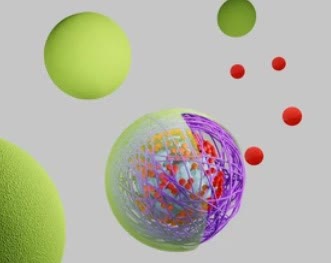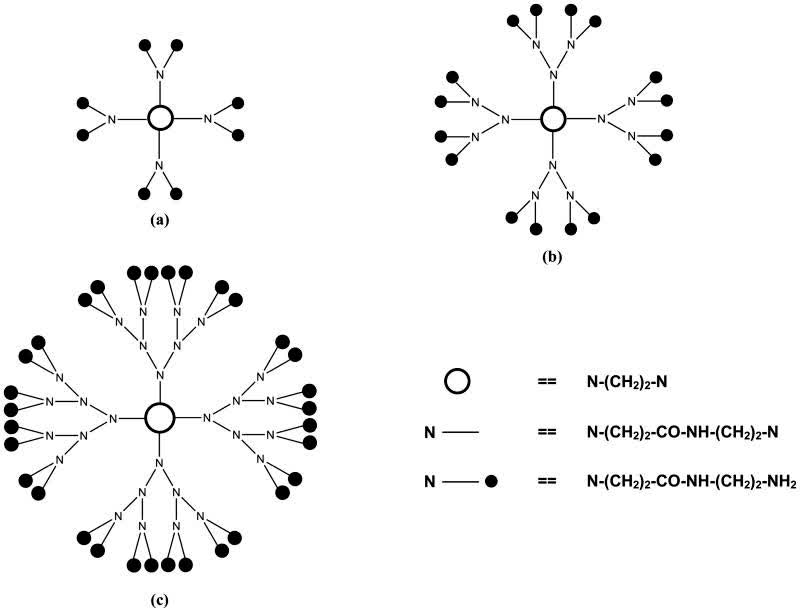Polymeric Gene Carriers Development
Inquiry
In gene therapy research, polymeric nanoparticles are of interest due to their biocompatibility, controlled degradation, and ability to protect nucleic acids from enzymatic degradation in vivo. For example, polymer cationic vectors (PCVs) have shown potential in improving the efficiency of gene transfection due to their low cost, low immunogenicity and tunability. The application of these polymeric materials in drug delivery systems not only improves the stability and bioavailability of drugs, but also enables targeted and controlled release of drugs, thereby improving therapeutic efficacy and reducing side effects. In gene therapy, these materials help deliver nucleic acid molecules safely and efficiently into target cells for gene regulation or therapy.
Based on years of research experience and a professional drug development research team, CD Formulation can provide customers with the development of efficient and reliable polymeric gene carriers to promote the research and application of polymerics for gene delivery in gene therapy species.
Types of Polymeric Gene Carriers We Develop
- Cationic polymeric gene carriers. These types of carriers are positively charged and can form stable complexes with negatively charged nucleic acids, facilitating cellular uptake of nucleic acids. Common cationic polymeric carriers include polyethyleneimine (PEI) and polylysine (PLL).
- Dendronized polymers. Dendronized polymers have a highly branched three-dimensional structure that provides multiple binding sites for increased nucleic acid loading and protection.
Advantages of Polymeric Gene Carriers
- Safety. polymeric delivery systems typically have lower immunogenicity and toxicity compared to viral vectors, resulting in fewer immune responses and side effects for patients.
- Controllability. The chemical and physical properties of polymers (e.g., molecular weight, degradability, surface charge) can be precisely modulated to optimize gene carrier performance.
- Stability. polymeric carriers can protect nucleic acids from degradation by in vivo enzymes and extend their circulation time in the body.
- Versatility. polymeric vectors can be chemically modified for targeted delivery, controlled release, responsive release, etc.
- Cost-effectiveness. Polymeric materials are usually low cost and easy to produce on a large scale.

Our Services for Developing Polymeric Gene Carriers
Synthesis and Optimization of Polymeric Carriers
We select suitable polymeric materials, such as polyethylene glycol (PEG), polylactic acid-hydroxyacetic acid copolymer (PLGA), polyethyleneimine (PEI), etc., according to the characteristics of our clients' projects, and chemically modify them to improve their transfection efficiency and reduce immunogenicity.
Nucleic Acid and Polymeric Complexation
The target gene is complexed with a polymeric carrier by physical or chemical methods to form a stable polymer-nucleic acid complex, which may include electrostatic adsorption, covalent binding, or self-assembly techniques.
Characterization and optimization of carriers
The synthesized polymeric carriers and their complexes formed with nucleic acids were characterized for their physicochemical properties, including particle size, surface charge, stability and release characteristics. Based on the characterization, our researchers optimize the polymeric carriers to improve their performance.
Application Testing
The performance of polymeric carriers needs to be tested in models to assess their efficiency and safety as drug or gene delivery vehicles. This includes cell culture experiments, animal model testing, etc.
Optimizing Polymeric Gene Carriers for Gene Therapy and Editing
- Cancer. Cationic polymer gene vectors, as a class of non-viral gene vectors with high transfection efficiency and low toxicity, also offer unique advantages in cancer therapy.
- Infectious Diseases. Polymer vectors can be used to deliver vaccines or pathogen-resistant genes to enhance the body's immune response against infectious diseases.
- Cardiovascular diseases. In the treatment of cardiovascular diseases, polymeric vectors can be used to deliver genes that promote blood vessel regeneration or repair to improve heart function and blood circulation.
- Inner ear diseases. For inner ear diseases, polymeric carriers can be used to deliver genes that protect or repair hearing to treat sensory disorders such as deafness.
- Dermatologic and ophthalmic diseases. In the treatment of dermatologic and ophthalmic disorders, polymeric carriers can be used to deliver therapeutic genes locally or systemically to promote the repair and regeneration of skin or eye tissue.
Our Improvement Strategies for Polymeric Gene Carriers Development
| Strategies & Technologies |
Content Description |
| Surface modification |
Increase cellular uptake by modifying the surface of the polymer carrier to increase its interaction with the cell membrane. |
| Targeted ligand binding |
Binding of specific targeting molecules such as antibodies or peptides to polymer vectors to improve their targeting to specific cell types. |
| Stimulus responsiveness |
Development of polymeric carriers that are responsive to environmental factors such as pH, temperature, or enzymes to enable gene release under specific conditions. |
Highlights of Our Polymeric Gene Carriers Development
- Our team of scientists and researchers consists of experts with deep multidisciplinary backgrounds aimed at developing high-quality and innovative polymeric gene delivery carriers.
- We utilize state-of-the-art technologies and methodologies for polymeric carrier development, offering a full range of services for the synthesis, characterization, and optimization of polymers.
- We can provide customized polymer carrier solutions to best meet the specific needs of our customers.
- We have strict quality control to ensure the accuracy of our services.
Published Data
Technology: Targeted ligand binding
Journal: Curr Pharm Des.
IF: 3.1
Published: 2010
This article focuses on two potential polymeric carriers, chitosan and poly(amidoamine) dendrimers, which have been widely reported for gene delivery. For chitosan, the interest arises from its availability, excellent non-cytotoxicity profile, biodegradability, and ease of modification. For poly(amidoamine) dendrimers, the interest arises from their ease of synthesis with controlled structure and size, minimal cytotoxicity, biodegradability and high transfection efficiencies.
 Fig.2 Poly (amidoamine) dendrimers. (Xu Q, et al., 2010)
Fig.2 Poly (amidoamine) dendrimers. (Xu Q, et al., 2010)
CD Formulation provides reliable technical support and solutions for the development of polymer vectors, and this service plays an important role in the advancement of gene therapy. If you are interested in us, please feel free to contact us.
References
- Xu Q, et al. Polymeric carriers for gene delivery: chitosan and poly(amidoamine) dendrimers. Curr Pharm Des. 2010, 16(21):2350-68.
Related Services


 Fig.2 Poly (amidoamine) dendrimers. (Xu Q, et al., 2010)
Fig.2 Poly (amidoamine) dendrimers. (Xu Q, et al., 2010)